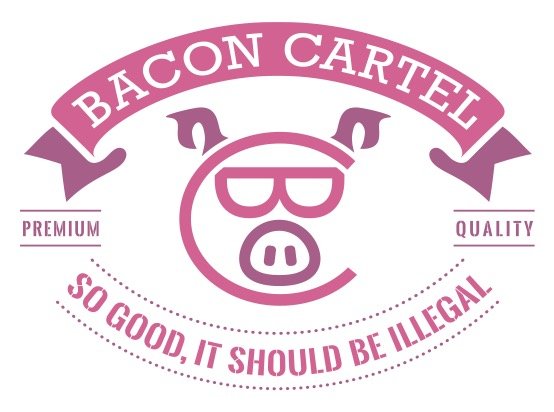“Most of the defects you never knew about, nor do I think you cared about, because you have a love of bacon..."
Being the Rabbi of Pork and having #baconcartel, you would think I would know everything about pork and bacon. Truth be known, I see a lot, but I never stop learning about pork. One thing that I pride myself in doing is learning about defects in bacon and the way they happen. Not all bacon is created equally. I know - can you believe that… what you get in the grocery store is not what restaurants get? ;-) Did you know that bacon can have defects? Yes, defects. But, not all deficiencies hamper the taste of the product. These defects include hooks, Lacy (sounds sexy, but it's not), tiger-striped bacon (injection marks), dark spots, and so on.
Two defects that affect the flavor negatively are the following: dark spots are blood ruptures or blood clots; these are the defects that affect the flavor profile of the bacon and are the most serious. Retail bacon is different from wholesale because retail is a mass-produced product, but all the manufacturers are vying for your money. This can lead to the lowest standard denominator product. The manufacturers will overlook blood clots and sell the product as is.
The other defect that affects the flavor profile of bacon is known as an abscess. It is a dark greenish spot within the fat of the bacon. The other area can be affected by an abscess near or below the spare rib part of the bacon. Abscess abnormalities are dead skin or tissue, the blood flow is cut off, and the abscess can grow. So, there you have it, two defects that affect the flavor profile of bacon.
What about the other ones? How do they happen? Well, that is how we produce the bacon. Bacon comes from bellies. Now, look at your belly and then those around you. Not all bellies are created equal. Most bellies, if not all, are put through a machine in a frozen state and then cut. The machine can produce defects like S curves, Hooks, and Dog ears when the belly goes in as it is pushed through. These types of blemishes don't necessarily mean off-tasting but affect the cooking of the product.
In wholesale, there are so many ways bacon is sold. 1) pork belly turns into bacon by going through a process and then being smoked and then cured. Retailers want to get as much product as they can on the shelf as much as possible, and they let the consumer try to figure it out. Wholesale has layout bacon, shingled, different size cut (as in thickness), cooked & slab. Then there is almost every kind of smoke, and do not forget whether it is nitrate-free or uncured. You see, the wonderful USDA says that if you do not use sodium nitrate to cure the product, it has to be called uncured. Some bacon producers are what I consider premiere or shabby chic producers. We will get to them all in later blogs, but let's concentrate on the basics of bacon for now.
Part of how we get a great product is how the animal is raised. Pigs used to be known as "dirty animals" and were considered "disease-ridden." This is part of why my religion (and a couple of others) say they are "unclean." One of those food-borne illnesses that got people sick back in the day was trichinosis. In the US, trichinosis is virtually wiped out, and I'll get into this in detail also in another blog. One thing I should mention (which annoys me and has to do with marketing) pigs, as well as chickens, are never allowed to be given growth hormones, So when you see someone touting this as a reason to buy their product, think of the guy trying to sell you gluten-free water. Why are your US-raised chickens and pigs' growth hormone-free (?) it is federal law! Now, antibiotics are an entirely different thing. If the animal gets sick, they will give the animal antibiotics to get them better. There are other benefits to the farmer from giving antibiotics - again, I'll get into the details in another blog. They let that animal get better and then send it off to get "harvested" (let's be honest, the animal is SLAUGHTERED). If the animal gets spooked, then Lactic acid is produced, and the final product then becomes chewy and develops an "off" flavor. Those Dark Spots or blood spots are just that: the animal got spooked, and then they "harvested" the animal. Sidebar for a sec - we harvest vegetables and fruits we DON'T harvest animals; we raise them and then slaughter them. I will not sugarcoat things, folks: I am going to tell you how it is! That is just me. If you are squeamish about where your food comes from, are here to criticize the process, or those who choose to engage in it or have "virgin ears,"…. go ahead and stop reading now.
So, there are different breeds of pigs, and they are called heritage breeds. Some chefs want only a specific breed. But we can dive deep into heritage breeds and chef's love affairs with them on another blog.
You never knew about most of the defects, nor do I think you cared about them because you have a love of bacon. If you are like me, bacon gives you a lardon as well. Stay tuned for more #baconcartel.
Jeffrey “The Kingpin” Schlissel
AKA “Rabbi” Schlissel
